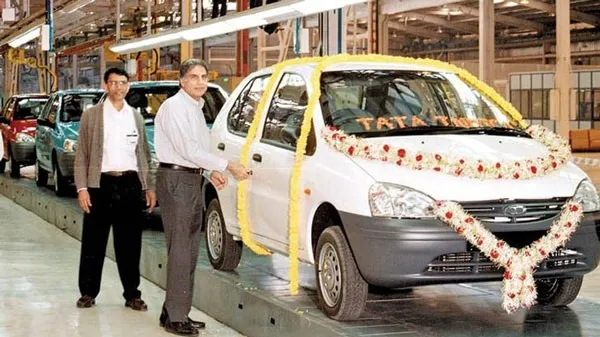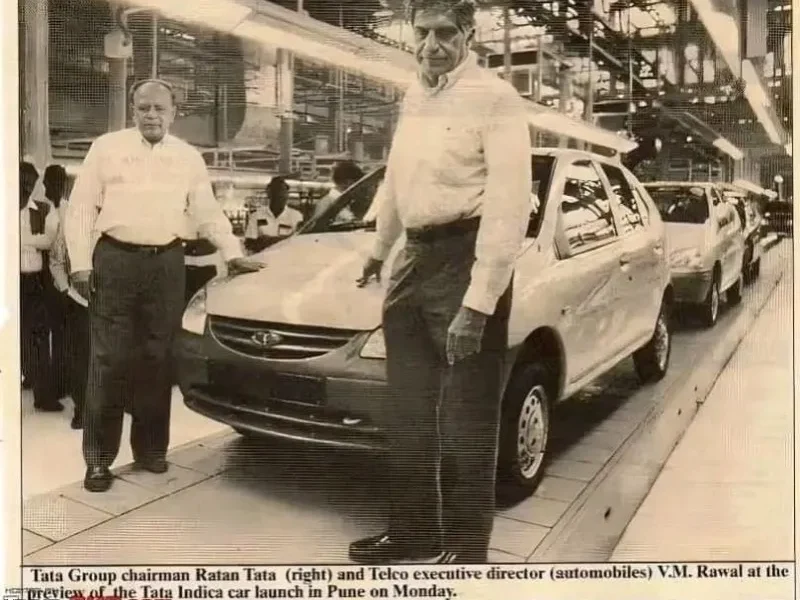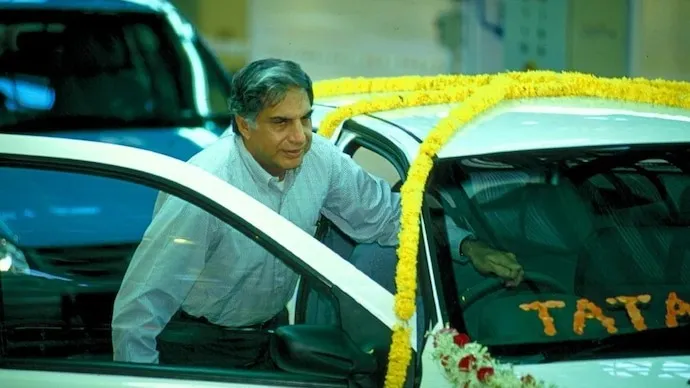Before the Tata Indica, cars in India had a foreign origin. Maruti, tied with Suzuki, wasn’t fully Indian, and the Ambassador was an Indian-assembled version of the British Morris Oxford. India didn’t have its own truly indigenous car, until Ratan Tata changed that with the launch of Indica in 1998.

Ratan Tata’s Vision for Indica
Ratan Tata took over as Tata Sons Chairman after JRD Tata stepped down in 1991, and India’s economic reforms opened doors for new ventures. JRD had long dreamt of an indigenous family car, but it wasn’t until Ratan took charge that the dream materialised. In 1993, at an exhibition, Ratan Tata announced his vision for Indica, famously stating it would have the size of the Maruti Zen, the space of an Ambassador, and the price of a Maruti 800, with diesel-like running costs.
The Challenge of Designing a New Car
Building a car from scratch was a massive challenge. Ratan Tata assembled an engineering team at TELCO’s Engineering Research Centre. He invested Rs 120 crore into Computer-Aided Design (CAD), an emerging technology at the time, and engaged 350 engineers in the design process. For aesthetics and engine support, Ratan sought help from experts in Italy and France, showing his commitment to creating a world-class product, while still maintaining his vision for an Indian car.

Manufacturing Indica
Manufacturing the Indica posed its own set of challenges. Tata Motors’ workers and suppliers were accustomed to building trucks, not cars, where precision was more crucial. Ratan Tata worked with 300 small-scale manufacturers, ensuring 98% of the car’s components were Indian-made. This initiative created 12,000 new jobs. Additionally, he built a new assembly line on 6 acres at the Tata Motors factory in Pune, and to ease the work for employees, he introduced robots and bicycles within the factory to enhance productivity and worker comfort.
Indica’s Launch and Initial Setbacks
In 1999, Indica was officially launched with the marketing slogan “More car per car,” generating over 1.25 lakh pre-orders. However, the first model had issues, from manufacturing defects to other technical problems. Critics quickly condemned the project as a failure and questioned the viability of Ratan Tata’s vision.

Indica V2
Not one to back down, Ratan Tata held internal meetings, gathered feedback, and committed to fixing the problems. The company launched nationwide customer camps to replace defective parts free of charge, spending Rs 500 crore to make things right. The engineers went back to the drawing board and developed the Indica V2, which became one of India’s most successful cars.
A Game-Changer in Indian Automobiles
Though rough around the edges, the Indica V2 was an affordable, spacious car that offered a diesel option, cheap running costs, and low repair expenses. The slogan “More car per car” resonated deeply with consumers, solidifying Indica’s place in Indian automotive history. It was the first step towards making Tata Motors a dominant player in the Indian market, with Ratan Tata’s belief in himself and his engineers driving this success.

Ratan Tata’s Legacy with Indica
The journey of the Tata Indica is a testament to Ratan Tata’s determination and belief in Indian innovation. The car represented more than just a vehicle; it embodied the potential for India to create its own legacy in the global automotive industry.
